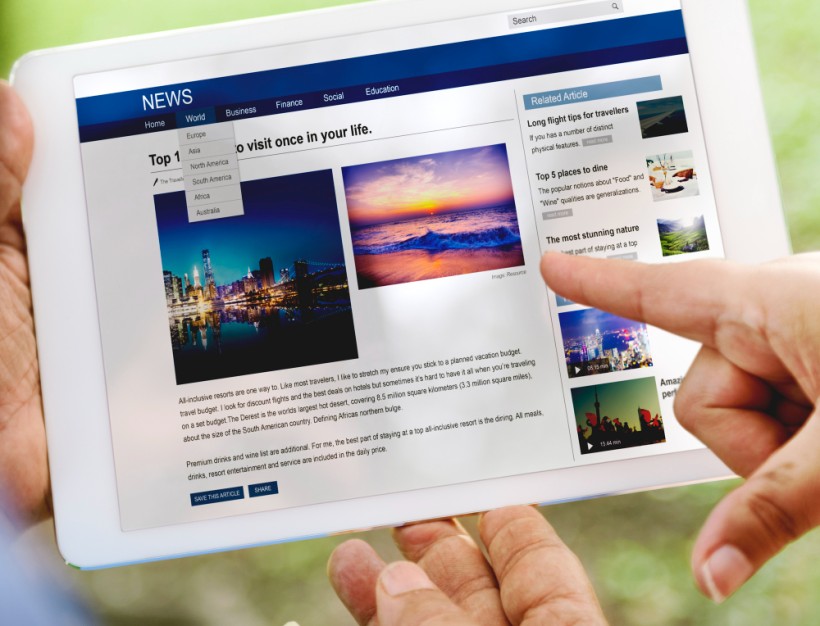Unlike one-off lead gen campaigns that aim for quick conversions, demand generation builds awareness, trust, and engagement over time. It aligns content, channels, and sales touchpoints so that by the time a prospect talks to sales, they already understand your value and are likely to buy.
This article outlines proven B2B demand generation tactics that improve lead quality. You’ll learn how data-driven targeting, personalized account outreach, educational content, and tighter sales alignment can turn your marketing from a lead factory into a pipeline engine that consistently delivers the right prospects.
Start With Clarity: Build Your Ideal Customer Profile and Target With Intent Data
Every effective demand generation program starts with focus. You can’t improve lead quality if you don’t clearly define who a good lead is.
That’s why the first step is building a precise ideal customer profile (ICP) — a detailed description of the companies and people most likely to succeed with your product.
An ICP goes beyond firmographics like industry or company size. It also captures the real drivers behind a purchase — the pain points, goals, and triggers that signal when a company is ready to buy.
Start by analyzing your most profitable customers. Look for shared traits such as:
- Revenue range
- Tech stack
- Business challenges
- Growth goals or success metrics
Document these characteristics and update them regularly as your market evolves. When your campaigns are guided by an accurate, current ICP, you naturally attract better-fit leads and spend less budget on poor matches.
Next, layer intent data on top of your ICP. Intent signals — such as increased searches for specific solutions, content downloads, or a key contact changing jobs — reveal when a company is actively in the market.
For instance, tracking when a current user of your software moves to a new organization can uncover a warm, high-converting opportunity.
Go Deep With Account-Based Marketing for High-Value Prospects
When you’re targeting enterprise or strategic accounts, broad inbound tactics aren’t enough. Account-based marketing (ABM) helps you focus on the few accounts that matter most — and reach them with messaging designed just for them.
Instead of chasing hundreds of unqualified leads, ABM treats key accounts as “markets of one,” aligning marketing and sales to win them together.
Start by tiering your target accounts. Reserve one-to-one, highly personalized campaigns for top-tier prospects, and use one-to-few approaches for secondary tiers. Personalization is critical — reference each account’s business goals, challenges, or recent news in your outreach. Create custom landing pages or tailored ads that speak directly to those needs.
Multi-channel coordination is what makes ABM powerful. Combine different touchpoints to surround decision-makers with consistent messaging, such as:
- LinkedIn outreach to start conversations and share relevant insights
- Personalized emails that speak directly to each account’s priorities
- Direct mail for memorable, tactile interactions
- Targeted ads that reinforce your message across platforms
Even small touches — such as sending a handwritten note or a tailored gift — can stand out. For example, imagine sending a personalized gift box with a note offering “five minutes of your time.” Thoughtful gestures like that can open doors and create memorable first impressions with high-value prospects.
A clear illustration comes from Engagio and Sendoso, who combined ABM with personalized direct mail to reach key decision-makers.
In one campaign, tailored gift boxes drove a 19% increase in meetings with Tier 2 target accounts, while a “coffee card” follow-up produced a 32% increase in replies among Tier 3 prospects.
These results demonstrate how thoughtful personalization and creative outreach within ABM can significantly lift engagement and open doors to high-quality opportunities.
Use Content and SEO to Attract and Educate
Content marketing is the foundation of strong demand generation. When you publish content that genuinely helps your audience solve problems, you attract prospects who already fit your ideal profile and who are open to your solution.
Focus on educational content. Address the real questions your buyers ask at each stage of their journey:
- Awareness: Explain key challenges or industry trends through guides and blog posts.
- Consideration: Share case studies, templates, or research that show practical solutions.
- Decision: Offer ROI calculators or success stories that demonstrate value.
Consistency is key. HubSpot’s success, for example, came from offering a huge library of free educational resources — ebooks, blogs, and even certification courses. This content built credibility long before a sales conversation began.
Pair strong content with SEO optimization to ensure it’s discoverable. Research buyer-intent keywords (like “best accounting software for mid-size firms”) and optimize your pages around them. Over time, this creates a steady inbound flow of prospects actively searching for what you offer.
With content and SEO working together, you build authority and let the right leads find you organically — already informed, interested, and more likely to convert.
Use Webinars and Events to Turn Engagement Into Intent
Webinars and events are among the most effective ways to convert interest into genuine intent. Unlike static content, they offer two-way engagement — participants invest their time, ask questions, and interact with your brand in real time. That level of involvement signals strong buying interest.
Well-run webinars should focus on education, not sales pitches. Choose topics that tackle your audience’s real challenges, and invite credible speakers to add depth.
Promotion is key: use email, LinkedIn, and partner channels to attract sign-ups. Record each session and make it available on-demand — this extends its value long after the live event.
In-person or small-format gatherings also play a vital role, especially for high-value B2B deals. Roundtables, dinners, or workshops allow you to connect directly with decision-makers and build trust faster than digital touchpoints.
Whether virtual or live, these events create memorable experiences that move prospects closer to sales readiness and deliver leads with clear intent.
Build Trust Through Social Media and Industry Voices
Social media is no longer just a consumer channel — it’s where B2B buyers research, learn, and engage.
Platforms like LinkedIn, X (formerly Twitter), and YouTube allow brands to stay visible and build credibility long before a formal sales conversation begins.
The goal isn’t instant conversion; it’s to create consistent visibility so that when prospects are ready, they already trust you.
Use social channels to educate, not merely broadcast. Share practical insights, customer success stories, and short videos that demonstrate expertise.
Adobe, for example, uses LinkedIn and Instagram to showcase creative tips and case studies that entertain and inform its professional audience.
Combine organic posts with targeted paid campaigns aimed at specific roles or industries to reach your ideal personas efficiently.
Partnerships with industry experts or influencers can strengthen credibility even further. Co-hosting webinars or guest articles with recognized voices helps you reach warm, pre-qualified audiences.
A SaaS HR platform, for instance, might team up with a respected HR analyst for a LinkedIn Live session on emerging workforce trends — drawing in HR leaders already looking for solutions.
When done authentically, social engagement and thought leadership convert awareness into trusted demand among the right buyers.
Stay Visible With Multi-Channel Campaigns and Retargeting
Buyers rarely convert after one interaction — they research, compare, and return when the timing is right. That’s why multi-channel campaigns are essential to modern demand generation.
A strong campaign delivers a connected experience across email, social, paid ads, search, and content.
For instance, a prospect might see a LinkedIn post, later click a Google ad, read a blog article, and finally sign up for a webinar. Each interaction reinforces awareness and trust.
The key is message consistency — your audience should see a unified story, not disconnected promotions.
Retargeting keeps your brand top of mind for prospects who already engaged but didn’t convert. Use display or social ads to reach people who visited your site or downloaded content, reminding them of the value you offer.
Combine that with automated email nurturing — a sequence of educational follow-ups that builds familiarity and confidence over time.
Align Marketing and Sales to Protect Lead Quality
Even the smartest demand generation strategy will fail if marketing and sales operate in silos. Alignment between these teams is what ensures that every qualified lead is recognized, acted on, and converted efficiently. Without it, marketing’s best efforts often end with sales saying, “the leads are junk.”
Start by agreeing on what a qualified lead means. Define clear criteria for marketing-qualified leads (MQLs) and sales-qualified leads (SQLs) based on fit, engagement, and intent.
Create a shared lead scoring model that quantifies quality — higher scores for strong ICP matches or pricing page visits, lower for weak signals.
Speed of follow-up also matters. If possible, establish a service-level agreement (SLA) for response time — ideally within 24 to 48 hours.
Technology makes alignment easier. Integrate your CRM and marketing automation tools so both teams see the same lead data and activity history. This prevents missed handoffs and gives sales valuable context for every conversation.
When marketing and sales collaborate around the same goals and systems, they don’t just share leads — they share ownership of revenue.
Lead Quality Isn’t a Guess — It’s a System
Demand generation is not chasing every possible contact, it’s nurturing the right ones until they’re ready. When you align data, content, and follow-up, you shift from filling the funnel to fueling real revenue growth.
The payoff: fewer leads, higher conversion, and a marketing engine that sales actually trusts.
But most teams don’t need more strategy. They need content that actually moves the needle.
That’s our focus at Column. We produce the assets — blogs, white papers, social posts, and thought leadership — that attract the right buyers and support real sales conversations.If better lead quality is the goal, we’ll help you build the engine behind it. Let’s talk.

Johnson is a Content Strategist at Column. He helps brands craft content that drives visibility and results. He studied Economics at the University of Ibadan and brings over years of experience in direct response marketing, combining strategy, creativity, and data-backed thinking.
Connect with him on LinkedIn.





